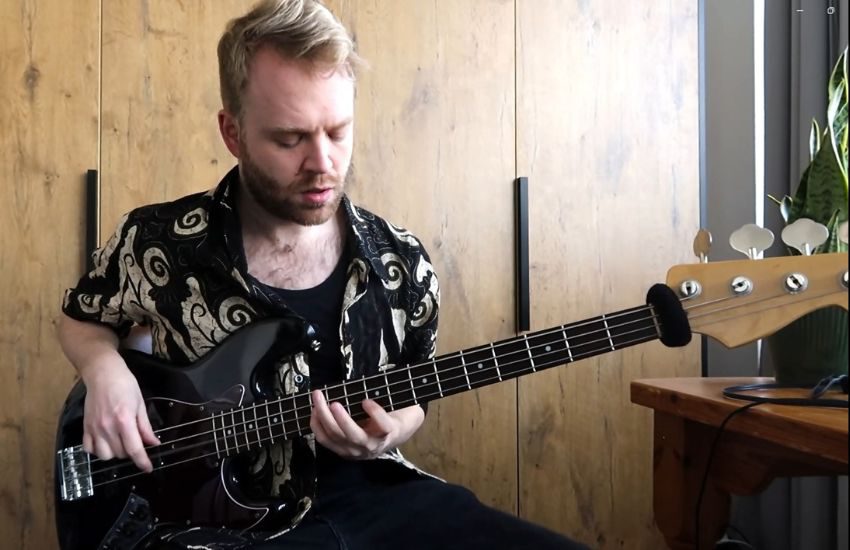For this twelfth part in the Groove Backpack series I created this Mixolydian slap bass groove that you can play over a dominant 7 chord. While a lot of slap bass is written in the key of E, this one is written in D. Pretty exciting right ;)? I hope it inspires you!
If you want to read more about my philosophy behind writing these basslines be sure to check out “How to write better basslines: The 4 ingredients“. Also take a look and listen to the other videos in this series via Groove Backpack. Let’s get started!
The groove
So what is Mixolydian?
In the title of this post you can see the word “Mixolydian”. But what does it mean? Mixolydian is (or the Mixolydian mode) is a mode of the major scale. As you probably know, the modes are helpful tools that you can use to create awesome basslines.
If you want to read more about Mixolydian and the other modes be sure to check out Better basslines How do you use modes on bass? This article will not only explain what the modes are, but also how you can apply them to your playing.
The harmony
This groove consists of three parts. We have an intro, to create some suspense. When the drums come in we have an A-part that revolves around a D7 chord and after that we have a B-part which revolves around a G7 chord. On the D7 chord I play the D Mixolydian mode. On the G7 chord I use a G Mixolydian mode. Whenever you see a dominant 7 chord (like D7 or G7), this mode will probably sound good.
Note that I added the minor third in at times. This makes the dominant 7 chords sound even more bluesy!
The rhythm and the drummer
If you listen to the drum part closely, you will realize it’s a very simple and basic groove. You have a kick drum on every 1st and 3rd quarter note. On every 2nd and 4th quarter note there is a snare hit. The quarter feel of the kick and snare adds a crudeness to the groove which is very typical in these Prince, P-Funk inspired jams.
You might also realize that the bass part and drum kick part don’t interlock as much as they do in other grooves in this series. And that’s true! Adding more kicks could also work, but by keeping it simple it allows the bass player to slap away without getting in the way.
A similar groove that comes to mind is P.Y.T. by Michael Jackson. Listen to how the drums and the bass sound very groovy together even though the kick only plays on the 1st and 3rd quarter note.
The technique
There are some parts where the groove in the A part doesn’t just use basic slap technique. There is some strumming going on in the first bar on the B and C octaves. A technique I also love to use is popping a note and then slapping the same note. I use this on the last two sixteenth notes on bar 5.
At first this feels a bit awkward to play. Just keep practicing at a slow pace and I’m sure you’ll get the hang of it. By first popping and slapping the note you create two individual notes with a strong attack that really stand out.
For the rest of the composition listen closely for slides, hammer-ons and pull-offs. I added a lot of legato in the examples so try to figure them out
Download the transcription and more grooves
If you want to download the whole transcription as a pdf, you can click here.
Be sure to check out the rest of the free series via:
https://bassessentials.com/category/free-bass-lessons-online/how-to-write-basslines-groove-backpack/

Subscribe for new grooves
Do you enjoy Groove Backpack? You can subscribe using the form below to get notifications as soon as new grooves are available.
I hope you found this article helpful! Let me know in the comments what your thoughts are and what you want me to play next!


Very interesting, thanks.
Thank you so much Jose!